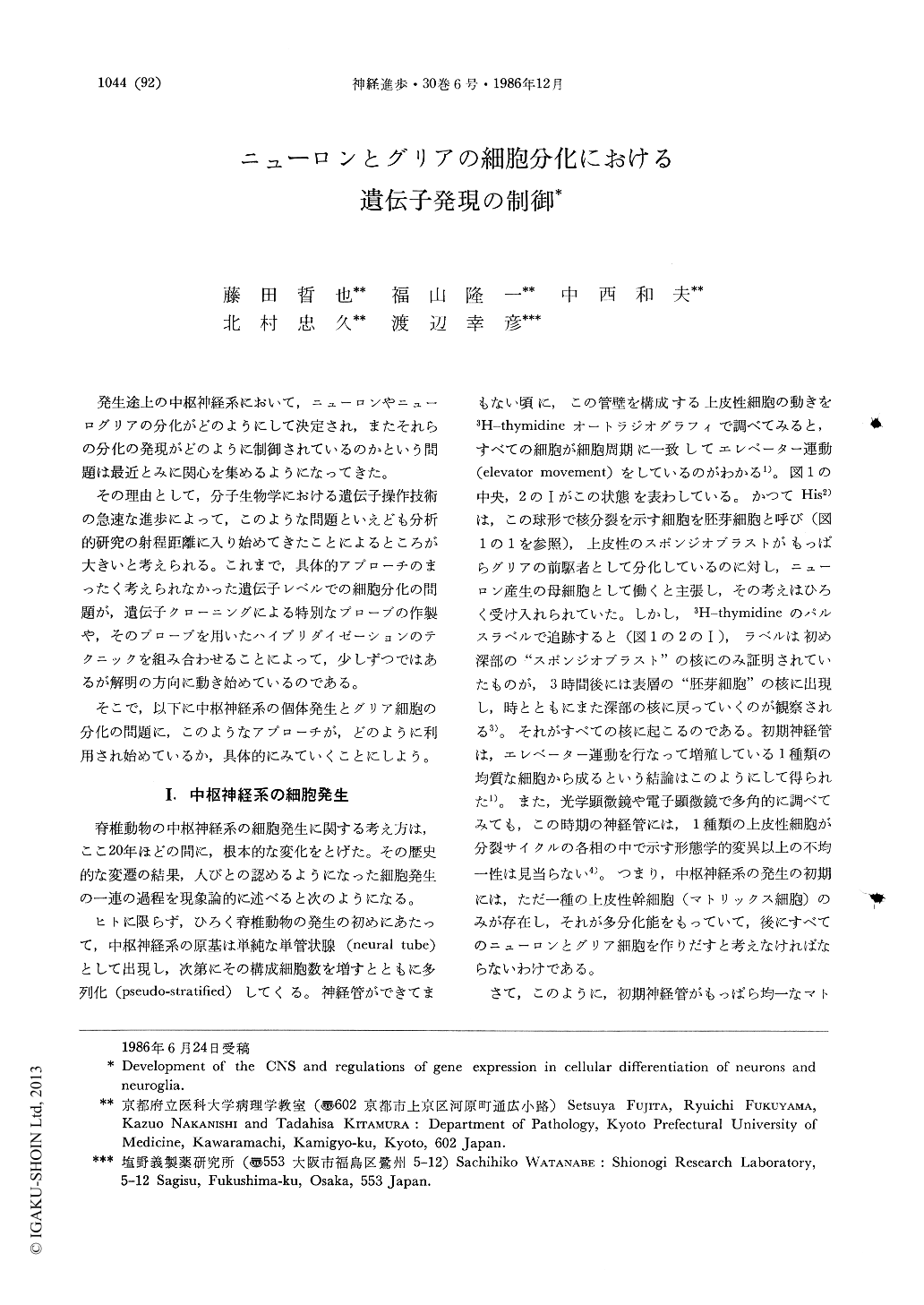Japanese
English
- 有料閲覧
- Abstract 文献概要
- 1ページ目 Look Inside
発生途上の中枢神経系において,ニューロンやニューログリアの分化がどのようにして決定され,またそれらの分化の発現がどのように制御されているのかという問題は最近とみに関心を集めるようになってきた。
その理由として,分子生物学における遺伝子操作技術の急速な進歩によって,このような問題といえども分析的研究の射程距離に入り始めてきたことによるところが大きいと考えられる。これまで,具体的アプローチのまったく考えられなかった遺伝子レベルでの細胞分化の問題が,遺伝子クローニングによる特別なプローブの作製や,そのプローブを用いたハイブリダイゼーションのテクニックを組み合わせることによって,少しずつではあるが解明の方向に動き始めているのである。
At the beginning of development of the verte-brate CNS, the wall of the neural tube is com-posed solely of matrix cells. This period is called stage I of cytogenesis, which is soon followed by stage II. In stage II of cytogenesis, i. e. stage of neuron production, some of the matrix cells become determined at an early GI phase and differentiated into neuroblasts. Immediately after the determination, the immature neurons (literal translation of the term neuroblast) lose the potency for DNA replication and are detached from the ventricular surface to migrate into the outermost part of the neural tube to form the mantle layer.Specificity of the individual neruons seems to be determined when the neuroblasts are differentiated from the matrix cells, as a function of locus and time of their production. During stage II of cytogenesis, the same matrix cell gives birth to a series of progressively different neurons, in sequence, as development proceeds. Analysis of neuron production has revealed that there is always a fixed end to neuron production by matrix cells in every part of the CNS, i.e. the end of stage II. Thereafter, only nonneuronal cells, i.e. neuroglial cells are produced. This stage is designated as stage III.

Copyright © 1986, Igaku-Shoin Ltd. All rights reserved.


